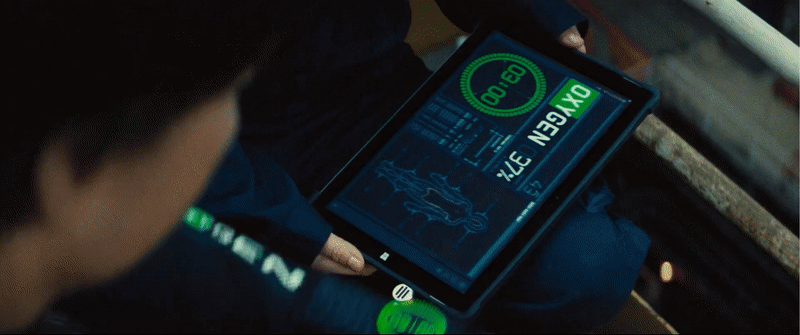Mission Impossible: Rogue Nation
As you would expect from a Mission Impossible movie, there are many examples of sophisticated, innovative and covert gadgets. Let's take a closer look at some of the more interesting ones.
Record player
The video below showcases an interactive display cleverly concealed within the guise of a record player. The base itself functions as a fingerprint scanner, while the glass lid serves neatly as the housing for the display. This embodies a recurring trope within the Mission Impossible franchise: an object assuming the appearance of the everyday, yet hiding a covert secondary function.
Pamphlet computer
Here we see another example of a disguised object, this time an opera program that functions as a computer. The scene unfolds as Simon Pegg inserts a USB stick to initiate the computer's startup sequence. This creative concept aligns seamlessly with the narrative.
It's worth noting that Mission: Impossible – Rogue Nation was released in 2015, and remarkably, in less than a decade, this seemingly imaginative idea has transitioned into plausible reality. The evolution of technology, particularly the availability of flexible displays and e-ink, similar to the technology used in Kindle devices, has made this conceivable.
Car lock
This is an interesting idea whereby someone can unlock a car door just by putting their hand against the window and using fingerprint recognition to unlock it. The appeal of this approach lies in its swiftness, sparing the need to search for keys, and its user-friendly simplicity.
Yet, on the flip side, there's a major vulnerability. The possibility of someone forcibly unlocking another person's vehicle raises serious concerns about security. Additionally, practical factors come into play. The system might encounter challenges when windows are unclean, such as when a vehicle is parked beneath a tree teeming with birds.
Nevertheless, the underlying concept remains undeniably captivating.
Wetsuit UI
Here’s a great concept for a display tailored for use underwater. In this concept, the UI is integrated into the very fabric of the wetsuit. This is a clever application particularly with its potential utility in specialised scenarios like cave diving and scuba diving.
Consider its potential in aiding underwater navigation. By seamlessly incorporating crucial directional cues into the wetsuit itself, this concept could offer an intuitive solution for maintaining orientation beneath the waves.
This becomes particularly relevant in situations like cave diving, where divers encounter difficulties in determining their direction due to poor visibility caused by the disturbance of sediment or silt in the water, often called silt-outs. With the UI embedded into the wetsuit, the diver could receive real-time guidance, swiftly correcting their sense of direction, enhancing their ability to navigate accurately and possibly saving their lives. Better still it could be incorporated as a HUD on the scuba mask.
Mask sequence
Synonymous with the Mission Impossible franchise is, of course, the mask sequence. Here is a great example of FUI being used to sell and explain a concept — in this case, utilising facial analysis to 3D print a mask. The entire process is succinctly portrayed within a mere 10 seconds of film.
Briefing sequence
There is also an example of a briefing sequence that is clear to read and to the point, aiding in advancing the plot.
This was a fun film filled with interesting gadgets. Look forward to seeing more from Mission Impossible!





